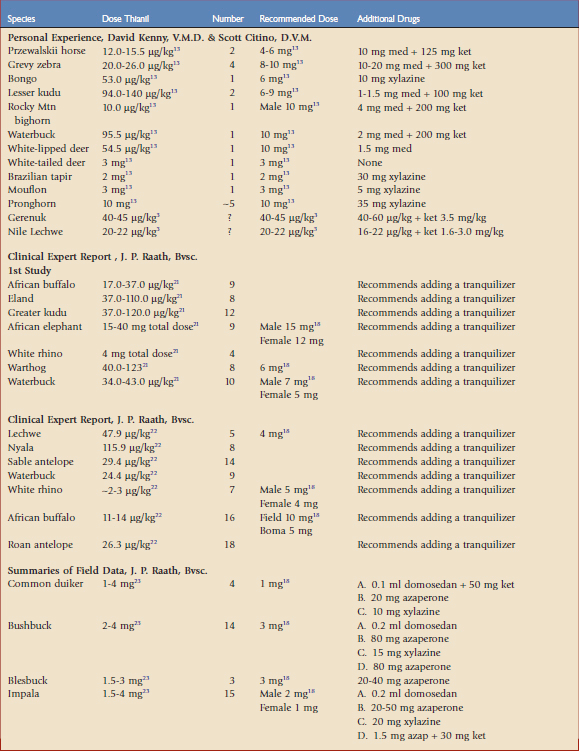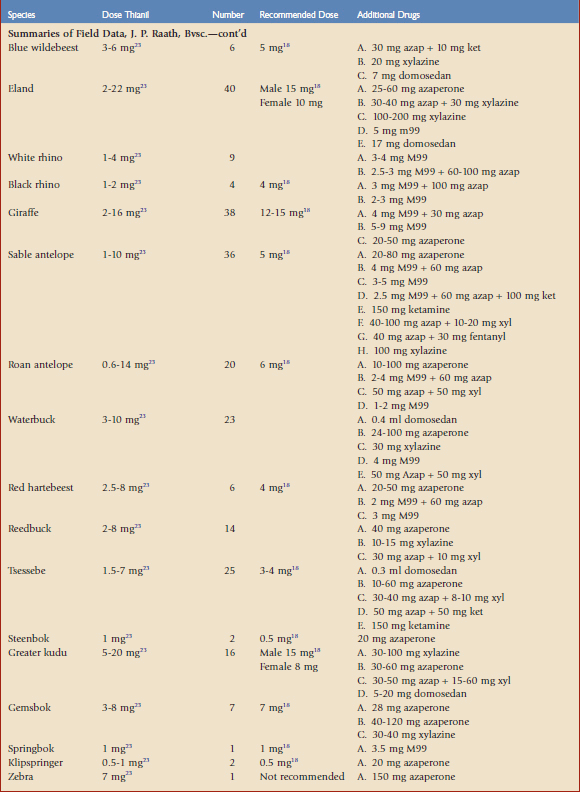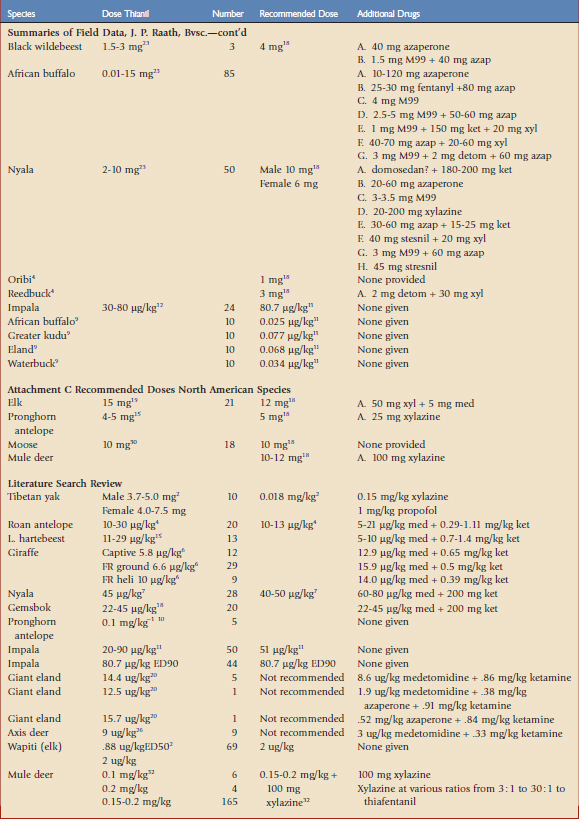[ Home ] [ Controlled Substances ] [ Opioids ]
THIAFENTANIL
|
Prior to the advent of potent opioids, the restraint and immobilization of nondomestic ungulates (hoofed mammals) has been extremely problematic. There continues to be a need for pharmacologic agents that will quickly and safely immobilize nondomestic ungulates of all sizes. This group may range in weight from several hundred to several thousand kilograms. Opioids have been used for this purpose since the 1960s; opioids have been the primary immobilizing agents for this group of animals.
Pharmacology:
Thiafentanil oxalate has a morphine-like analgesic mode of action and produces rapid immobilization following intramuscular injection.
Clinical Considerations:
The advantage of thiafentanil oxalate compared with the previously mentioned opioids (etorphine and carfentanil) is a shortened induction time, by as much as 50%, while still retaining equivalent agonist activity.
The rapid immobilization provided by thiafentanil oxalate means that targeted animals may be handled and secured quicker than with carfentanil, mitigating problems with trauma, overheating, and escapes by free-ranging wildlife. Because the half-life is approximately 50% that of carfentanil, it is a safer drug because there is less potential for renarcotization. The concentration at 10 mg/mL also improves safety because it may be delivered in a dart, 3 mL, for most species. This improves dart ballistics and provides greater accuracy in delivery to the target.
Dosing Table Thianil:
Thiafentanil oxalate is commercially formulated as 10 mg/mL. Dosing for thiafentanil oxalate cannot be given on a strict millgram per kilogram basis because there is much species variability. Most species will require a total dose of 10 mg. At this formulation, the combination of thiafentanil oxalate and a sedative will fit in a dart of 3 mL or smaller. Darts of this size may typically be delivered safely and accurately (reliable ballistics) to most exotic ungulate species. Doses will also vary depending on the situation: captive versus free-ranging animals, agitated versus quiet animals, healthy versus sick animals. In field conditions, it is often desirable to err on the side of overdosing so that the animal does not flee too long and too far, leading to trauma, overheating, and capture myopathy. Specific doses and recommendations are given in table for some nondomestic ungulate species:




https://veteriankey.com/thiafentanil-oxalate-a3080-in-nondomestic-ungulate-species/

https://www.deadiversion.usdoj.gov/fed_regs/rules/2016/fr0826.htm

https://www.deadiversion.usdoj.gov/fed_regs/rules/2019/fr0618.htm
FDA FOI Summary:
The result of the qualified expert panel's risk-benefit analysis was a unanimous conclusion that THIANIL is safe and effective for use for immobilization of captive minor species hoof stock excluding any member of a food-producing minor species such as deer, elk, or bison and any minor species animal that may become eligible for consumption by humans or food-producing animals. The qualified expert panel also recommended that THIANIL be marketed by prescription.


https://www.fda.gov/media/101533/download
Thiafentanil:
It is similar to carfentanil though with a faster onset of effects, shorter duration of action and a slightly lesser tendency to produce respiratory depression
- A highly potent opioid analgesic
- Used in veterinary medicine to anesthetise large animals such as impala, usually in combination with other anesthetics
- An analog of fentanyl
- Invented in 1986
Side effects of fentanyl analogs are similar to those of fentanyl itself, which include itching, nausea and potentially serious respiratory depression, which can be life-threatening.

| Opioids | Link to this page |




